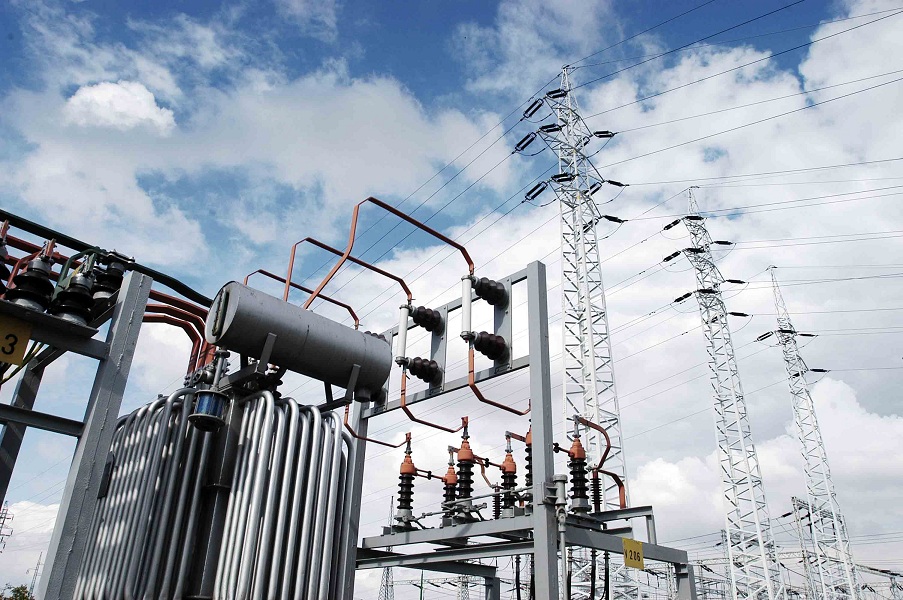Kazakhstan is exploring opportunities to expand it electricity export market as Astana sets its sights to the east and south and explores opportunities to unload some of its excess power generation to power-hungry neighbors China, Afghanistan and Pakistan.
Energy Minister Kanat Bozumbayev said Astana sees China as a potential market for electricity, as the Asian giant’s energy consumption is further on the rise.
“China is a big global player, a big market. For several years we studied the possibilities of electricity supply. We are seeing an increase in consumption in China, especially in the Xinjiang Uygur Autonomous Region,” Bozumbayev, referring to China’s far western regions that border Kazakhstan.
“Of course, we do not have any connection today and the possibility of transmitting, but this is a matter of time. Probably, we will cooperate more closely, and the export of electricity is possible,” Bozumbayev added.
China’s electricity consumption in 2016 stood at 5.92 trillion kilowatt hours (kWh), making it the number one consumer of electricity worldwide and ahead of the number two placeholder, the United States, by more than 51 percent. Imports exceeded six billion kWh in the same year, meaning China imports only slightly more than 0.1 percent of its total electricity demand. Electricity would be a new deliverable in Kazakhstan’s basket of exports to China, which already includes minerals and metals such as copper, iron, and zinc, as well as animal and vegetable products.
In addition to China, Astana is exploring opportunities to export electricity to its southern neighbors Afghanistan and Pakistan.
“We are observing the development of the electricity transmission systems towards Afghanistan and Pakistan, which is being conducted in the Republic of Tajikistan,” Bozumbayev said.
The electric power industry in Kazakhstan has gone through ups and downs since the country became a republic, following the collapse of the USSR in 1991. Besides generating and exporting electricity, Kazakhstan has also imported some of its demand, including from Russia. At the same time, Russia, Kyrgyzstan, and Uzbekistan have become Kazakhstan’s three biggest customers: In 2016 Moscow purchased nearly 2.8 billion kWh, while Bishkek bought 335.3 million kWh.
Having produced nearly 100 billion kWh in 2016 and consuming over 92.3 billion kWh domestically, according to figures provided by the Kazakhstan Electricity Grid Operating Company (KEGOC), leaders in Astana are setting 150 billion kWh as their production goal by 2030.
According to the US Government’s website Export.gov, Kazakhstan has 63 power plants nationwide, including five hydroelectric power stations scattered primarily along the Irtysh River in northeastern Kazakhstan. Coal represents Kazakhstan’s main source of power, generating about 72 percent of its electricity supply, while hydro resources form another 12.3 percent. About 10.6 percent comes from natural gas and another 4.9 percent from oil. Power plants represent 99.8 percent in overall power production, whereas alternative energy production stands at 0.2 percent.
Kazakhstan Electric Grid Operating Company (KEGOC) is planning to renew a majority of the firm's 25,000 kilometers of power transmission lines that were built during the Soviet period. The plans include implementing 15 projects, valued at $3 billion, to modernize or build new power transmission lines and substations by 2025. At the same time, Kazakhstan's national electricity generator Samruk- Energo plans to install new power generating the capacity of 14 gigawatts by 2030.
Kazakhstan’s Minister of Investment and Development Asset Issekeshev reported in 2016 that investments in Kazakhstan’s power sector should reach $63 billion over the next 18 year with $37 billion going towards power generation, $9 billion in power distribution networks, and $17 billion towards regional power distribution organizations.







 President Aliyev emphasized the critical role of the North-South Transport Corridor in fostering transport cooperation between Azerbaijan and Russi...
President Aliyev emphasized the critical role of the North-South Transport Corridor in fostering transport cooperation between Azerbaijan and Russi...
 Armenian sappers commenced on Monday mine-clearance operations in the territories adjacent to the Saint Mary Church in village of Voskepar (Armenia...
Armenian sappers commenced on Monday mine-clearance operations in the territories adjacent to the Saint Mary Church in village of Voskepar (Armenia...
 Russian Foreign Minister Sergei Lavrov has reasserted that Moscow has no intentions to stop the fighting in Ukraine, even if peace talks commence.
Russian Foreign Minister Sergei Lavrov has reasserted that Moscow has no intentions to stop the fighting in Ukraine, even if peace talks commence.
 Iran has refuted reports of alleged damage to Shimon Peres Negev Nuclear Research Centre located southeast of Dimona, Israel, during the recent air...
Iran has refuted reports of alleged damage to Shimon Peres Negev Nuclear Research Centre located southeast of Dimona, Israel, during the recent air...
 Iran’s Foreign Minister, Hossein Amir-Abdollahian, has labeled a foiled Israeli drone attack in certain parts of the country as a "failure" for Isr...
Iran’s Foreign Minister, Hossein Amir-Abdollahian, has labeled a foiled Israeli drone attack in certain parts of the country as a "failure" for Isr...



